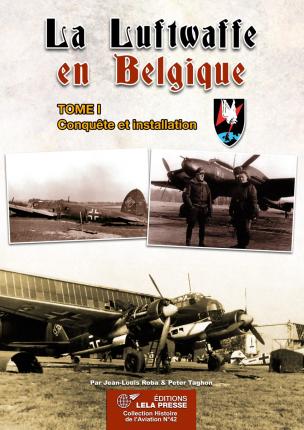
- aviationmegastore.com
- aviationoutletstore.com
- Ship to United States
Quick Search
Aviation Shop
categories- Aircraft Scale Models
- Airplane Skin Tags
- Books on aviation
- Books on aviation
- Airports/Air Bases
- Aviation Humor/Comics
- Civil Aviation
- Disasters/Flight Safety
- Aviation History
- Magazin
- Military Aviation
- Modelling
- Pilot Books
- Preservation,Vintage,Musea,W&R
- Aircraft Recognition Book
- Special Offer Aviation Books
- Aircraft Spottersbook
- Various Aviation Subjects
- World Wars
- X-Planes Germany
- Metal Signs
- Pilot Shop
- Scale Modelling Kits
- Various Aviation items
Downloads
Public holidays
Amended or confirmed operating hours of the Luchtvaart Hobby Shop in Aalsmeerderbrug on the following dates:
Aviation Megastore website is available without limitations. Orders are processed during shop operating hours.
| Th | 9 May | Closed: Ascension Day |
| Mo | 20 May | Closed: Whit Monday |
Frequent buyers programme
Collect Megapoints for Megavouchers
Read the conditions...
Hold & Store service ©
Aviation Megastore offers unique Hold & Store service © for internet customers that wish to combine several individual orders to one single shipment, reducing the overall shipping cost significantly.
Read more...
La Luftwaffe en Belgique, Tome 1 - Conquête et installation
Product code 9782374680453
€ 44.91
Series Collection Histoire de L'Aviation No42
Publisher/Brand LELA Presse
Author Xavier Capy, Bernard Palmieri, Jacques Guillem
Format A4
No. Pages 280
Version Hard cover
Language French
Category Books on aviation
Subcategory WW2 » WW2 Belgium
Availability only 3 remaining
This product was added to our database on Thursday 20 October 2022.
Your reliable Aviation Book Source since 1989
Also in this series:
| product | Publisher/Brand | Series/scale | Price € | ||
 | La Luftwaffe en Belgique, Tome 2 - Intensification des combats et repli | LELA Presse | Collection Histoire de L'Aviation No42 | € 45.83 |
Product description
French
Dès septembre 1939 et durant toute la 'Drôle de Guerre', l'espace aérien de la Belgique neutre fut sillonné par les appareils des belligérants profitant de la faiblesse de l'Aéronautique Militaire. Les avions de reconnaissance allemands purent ainsi relever les futures routes d'invasion. Le 10 mai 1940, la Wehrmacht entrait dans le pays et, jusqu'à la fin de ce mois, les combats firent rage dans le ciel belge devenu un enjeu stratégique majeur pour les envahisseurs. Avec le retrait du corps expéditionnaire britannique, les engagements aériens se raréfièrent (bien que toujours actifs en France) ce qui permit aux services de la Luftwaffe de s'établir très vite dans le pays pour remettre en état les aérodromes ainsi que les structures militaires pouvant leur servir.
Après la capitulation française à la fin du mois de juin 1940, la Belgique ne connut que peu de combats aériens de jour, que ce soit lors de la " Bataille d'Angleterre " ou de la " Non-Stop Offensive " en 1941, étant 'protégée' par la distance la séparant des bases de chasse de la RAF. Tout au plus, des navires et quelques ports devinrent les cibles de l'aviation britannique.
Par contre, la Belgique était (comme les Pays-Bas) sur une des routes directes empruntée par les appareils du Bomber Command partant de nuit attaquer les usines de la Ruhr. D'où l'implantation rapide dans le pays d'unités de chasse nocturne (Nachtjagd) qui allaient se faire un nom (les fameux 'Ghosts of Saint-Trond' redoutés par les équipages de la RAF).
La période 1939-1942 fut donc contrastée avec de sanglants combats lors de l'offensive à l'ouest suivis par une relative tranquillité dans les cieux belges seulement troublés par une montée en puissance du Bomber Command. Les quelques intrusions des 'lourds' américains en 1942 demeurèrent 'anecdotiques' bien qu'annonciateurs d'une menace croissante.
English
From September 1939 and throughout the 'Funny War', the airspace of neutral Belgium was criss-crossed by belligerent aircraft taking advantage of the weakness of Military Aeronautics. German reconnaissance planes were thus able to identify future invasion routes. On May 10, 1940, the Wehrmacht entered the country and, until the end of that month, fighting raged in the Belgian sky, which had become a major strategic challenge for the invaders. With the withdrawal of the British expeditionary force, air engagements became rare (although still active in France) which allowed the Luftwaffe services to establish themselves very quickly in the country to restore the airfields as well as the military structures that could serve them.
After the French surrender at the end of June 1940, Belgium saw little daylight air combat, either during the "Battle of Britain" or the "Non-Stop Offensive" in 1941, being 'protected' by the distance separating it from the RAF fighter bases. At most, ships and a few ports became the targets of British air force.
On the other hand, Belgium was (like the Netherlands) on one of the direct routes taken by the aircraft of Bomber Command leaving at night to attack the factories of the Ruhr. Hence the rapid establishment in the country of night fighter units (Nachtjagd) which were to make a name for themselves (the famous 'Ghosts of Saint-Trond' feared by the crews of the RAF).
The period 1939-1942 was therefore contrasted with bloody fighting during the offensive in the west followed by relative tranquility in the Belgian skies only disturbed by the rise in power of Bomber Command. The few intrusions of the 'heavy' Americans in 1942 remained 'anecdotal' although harbingers of a growing threat.
- aviationshopsupplies.com
- aviationmegatrade.com
© 1989–2024 Luchtvaart Hobby Shop B.V.
